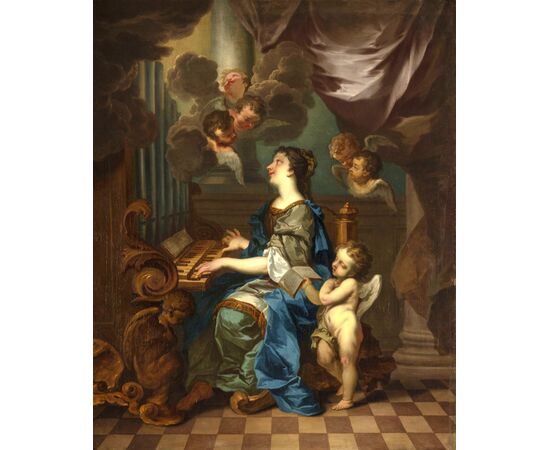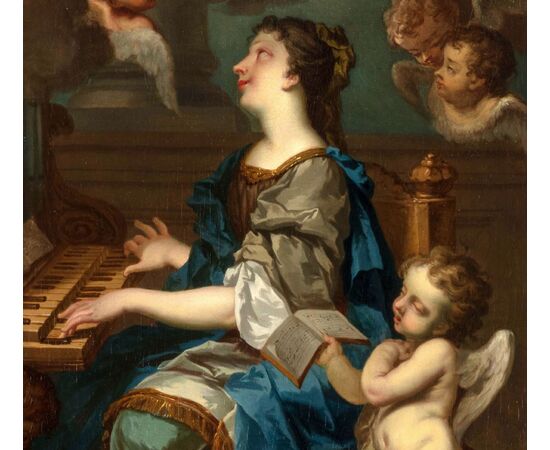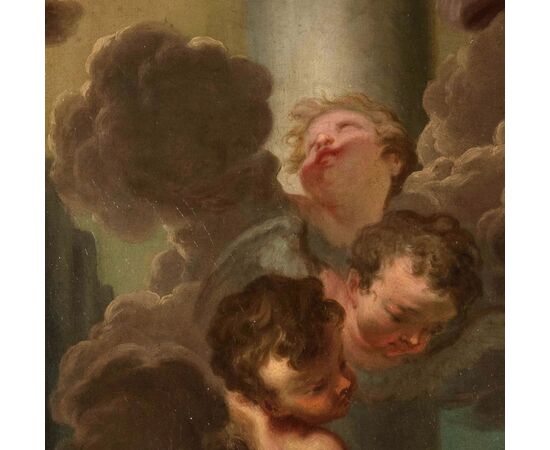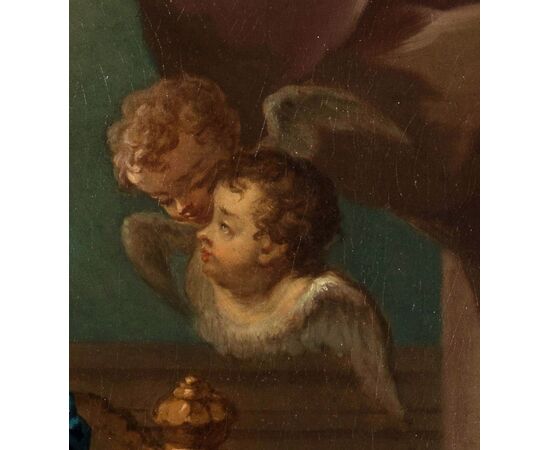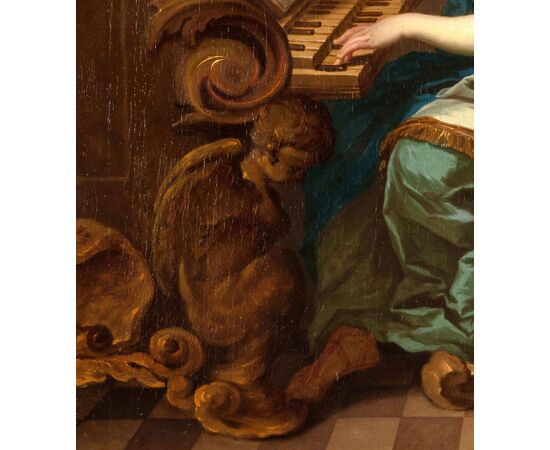Roman School of the 17th century, Saint Cecilia with angels in concert, oil painting on canvas
Roman School of the 17th century, Saint Cecilia with angels in concert, oil painting on canvas
Dimensions: W 102.5 x H 126 cm
Price: confidential negotiation
Object accompanied by a certificate of authenticity
The valuable painting, in excellent condition, depicts Saint Cecilia playing the organ, surrounded by putti and cherubs. The saint, with an absent gaze turned towards a mystical and divine light that emanates from behind the organ pipes and soft clouds, is dressed in refined and precious silk robes. Next to her, a putto offers her the musical score. The structure of the organ and the chair, in carved wood, reflect the stylistic dictates widespread in Rome during the Baroque period. The checkered flooring, distorted perspectivally, invites the viewer's gaze to converge towards the center of the canvas, where the saint's face is represented. In the background, two imposing marble columns and rich draperies frame the scene and act as a backdrop, increasing the compositional solemnity.
The author of the canvas is to be found in a painter active in Rome in the 17th century with skilled technical and compositional abilities. The composition, played mainly in shades of brown, blue, green, and red, is harmonious and well-balanced. The natural rendering of the silk fabrics, as well as the complexions, demonstrates a high pictorial expertise.
Iconographically, Saint Cecilia is often depicted playing an instrument, and her image is often an allegory of Music itself, included in the quadrivium of liberal arts.
Cecilia was a Roman noblewoman, hence the sumptuous and rich clothing, who lived between the 2nd and 3rd centuries AD. She was given in marriage to Valerian, also a descendant of a noble Roman family. On their wedding night, Cecilia revealed to her husband her conversion to Christianity and her decision to take a vow of chastity. Her husband accepted his wife's wish, converted himself to Christianity, and also converted his brother Tiburtius.
All three thus began a work of spreading the new religion, and Cecilia, an excellent orator, soon managed to convert many Romans, protected and helped by the two soldier brothers. For their charitable activities, their fame grew so quickly that they were condemned to martyrdom by the Roman prefect Turcio Almachio. Saint Cecilia is known to be the patron saint of music. Her association with this art was generated by an erroneous interpretation of the texts of the antiphonaries that were used in masses during the celebrations for the saint.
The original text reads: "Candentibus organis, Caecilia virgo in corde suo soli Domino decantabat...", that is, "Among the incandescent organs (instruments of martyrdom), the virgin Cecilia sang praises to God in her heart." The incorrect interpretation is in the first phrase, thus transcribed: "Cantantibus organis..", that is, "Among the playing organs (musical instruments)", therefore, listening to heavenly music, she sang praises to God in her heart.
Thus begins, from the 15th century, the iconographic fortune of Cecilia, to whom musical abilities were attributed. Thus, the saint was assigned a portable organ as a symbol of her excellent musical skills, and since then she has been invoked by singers and composers as their protector.
Historical-artistic studies are currently underway.

